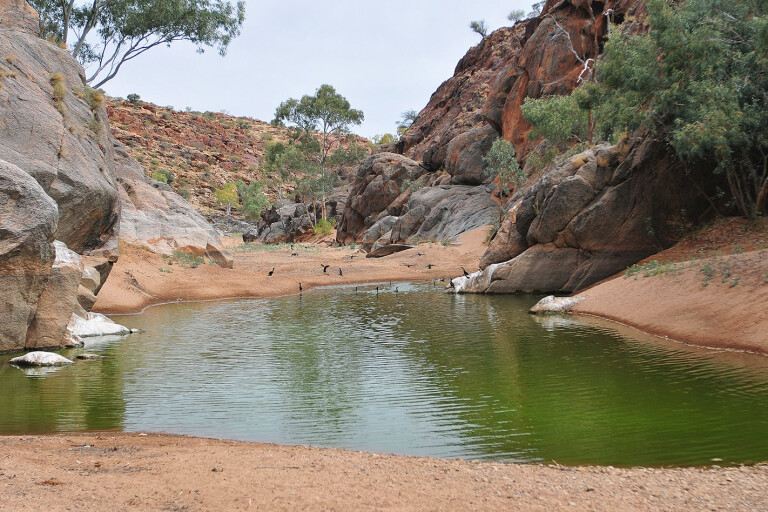
By the time you read this, I’ll be back in Oz, looking for some desert country after experiencing the almost stifling verdancy of north-east North America, where we have been travelling for the past few months.
We’ll be preparing the Patrol for a latish trip up to the northern Flinders Ranges in South Australia, the Corner Country of New South Wales, and south-west Queensland. I normally wouldn’t go up that way in October but, with the rain the region has had in the past few months, the countryside will be in great condition and the waterholes will be brimming and full of life. Such conditions only come about every couple of years, so I’m grabbing the opportunity to see it while it lasts.
There are some magical waterholes to visit when travelling that part of our outback. High on the list for this trip will be the waterholes in and around Arkaroola in the northern Flinders region (see: www.arkaroola.com.au). There are the Stubbs, Bolla Bollana, Echo Camp and Nooldoonooldoona waterholes (try pronouncing the last one after a few beers) to name a few, and all of them attract wildlife and birds, despite the normally arid climate that surrounds.
It’s best to get to such places early in the morning or in the early evening when animals and birds come in to have a drink. Park the truck and sit with a drink and a pair of binoculars under a tree and you will be surprised at what starts to move in and around the waterhole after about 10 or 15 minutes.
On the way north and slightly south, but still in the Flinders, I’ll take a wander out to Warren Gorge to see if the creek through the small gorge is flowing and the waterholes are brimming. It’s a place I’ve been going to since I was a kid and I used to catch tadpoles in and along the creek. Located just north of Quorn, Warren Gorge is a top spot to camp for a few days and the local council has set up a few toilets and rubbish bins for those staying for a day or two, or longer.
Warren Gorge is also a good spot to spy the shy and elusive yellow-footed rock-wallaby, one of our most delightful and magnificently marked native animals. Restricted to the Flinders Ranges and rocky hills to the east, as far as the Barrier Ranges north of Broken Hill, the yellow-footed wallaby has had a hard time dealing with foxes, cats and humans. This has resulted in wallaby numbers plummeting. The good news is that, with a lot of effort by numerous groups and government departments, the wallabies are bouncing back. The last time I was in Warren Gorge last year, one sat on a rock ledge no more than 10 metres from me.
Heading north, we’ll also check out the camping area and ruins at Farina, just north of Lyndhurst. The camping area here, set on Gum Creek, is one of our favourite camping spots when heading north of the Flinders or along the Strzelecki or Birdsville tracks (see: www.farinastation.com.au). There are a lot of birds along the shady creek and the old ruins of Farina (which are being renovated by the Farina Restoration Group) are well worth putting some time aside to investigate.
Cutting across the top of the Flinders Ranges on a remote track brings you to Hamilton Creek, and just up from the track crossing is Terrapinna Waterhole, which should be a lot bigger than it was the last time I saw it a couple of years ago. Even then, the 30-metre-long waterhole, confined by its low, rocky cliffs, played home to a group of 20 or so cormorants, while in the evening a heap of other birds came in to drink.
Further north along the Strzelecki Track, there’s a couple of waterholes. The best and certainly the most permanent is the man-made Montecollina Bore, with its overflow and cooling ponds nearby. You’ll be surprised at what birds you’ll find here; from mobs of corellas to banded stilts and other feathered wanderers.
We’ll poke through Sturt National Park to Tibooburra and Milparinka (a couple of good waterholes for humans are through there). Then we’ll go down the back way to the Barrier Ranges and Broken Hill, checking out a few waterholes along the way. It’ll be a great way to spend a week – you should do the same while the country is relatively green and the waterholes are full and brimming with life!

COMMENTS